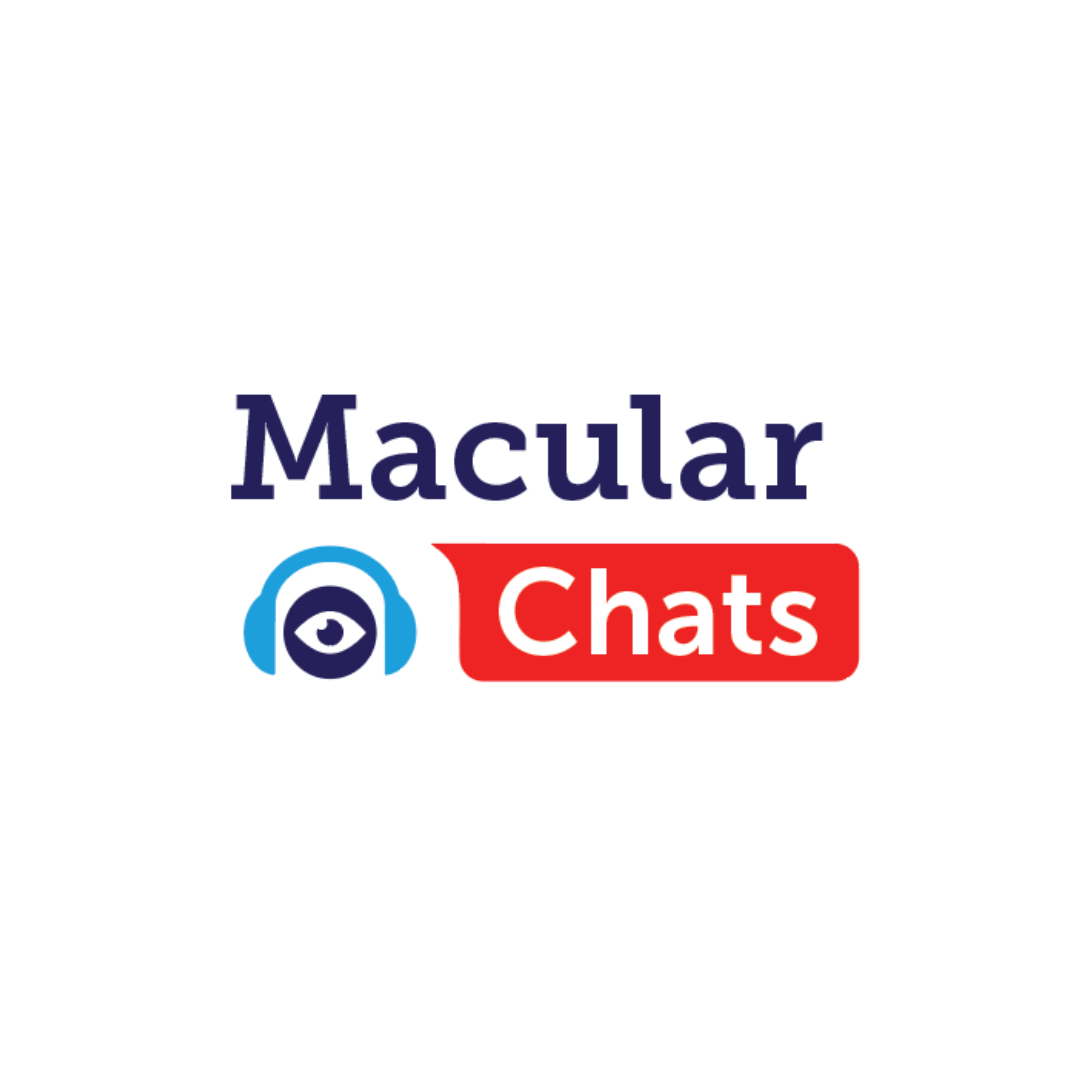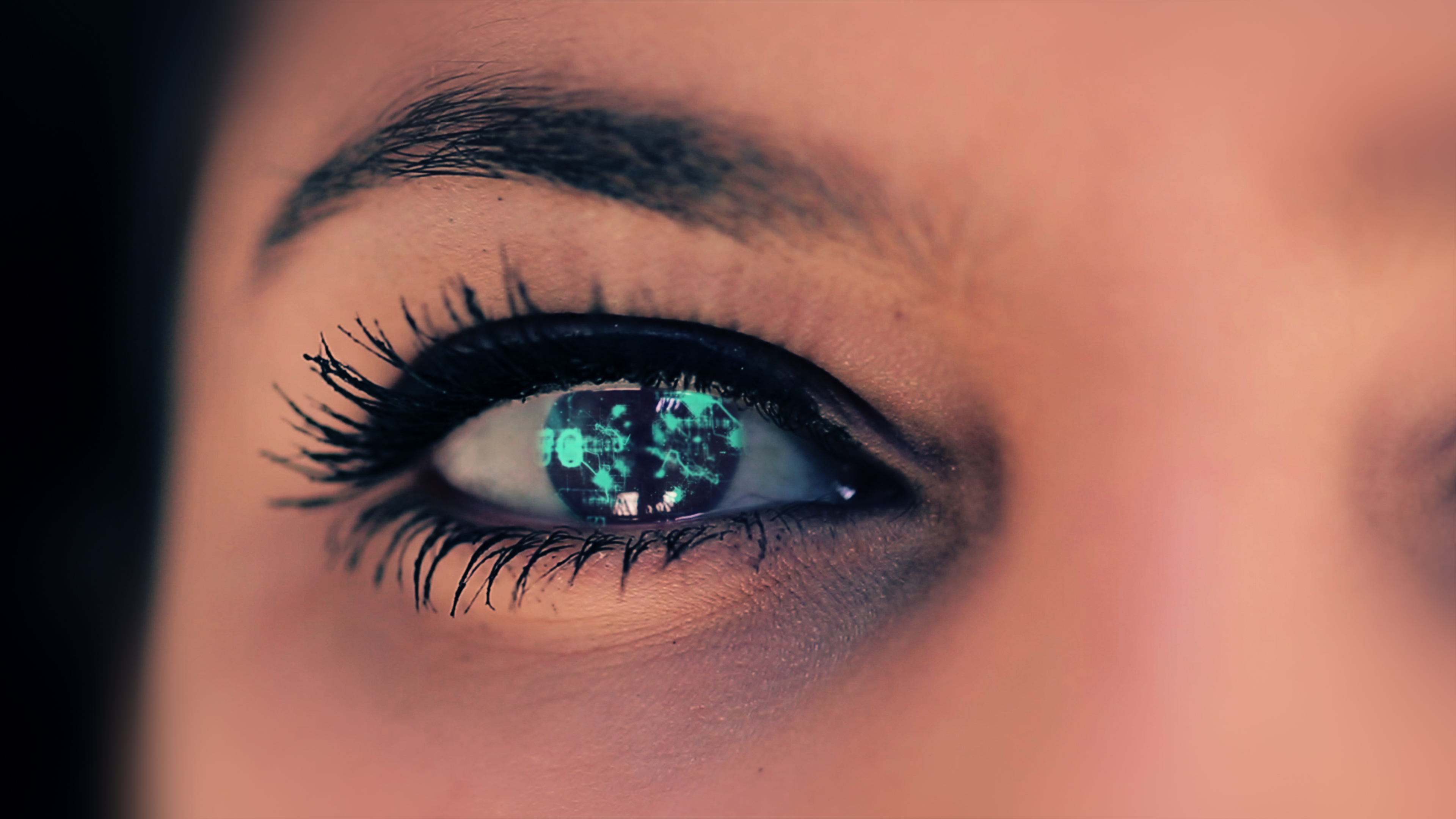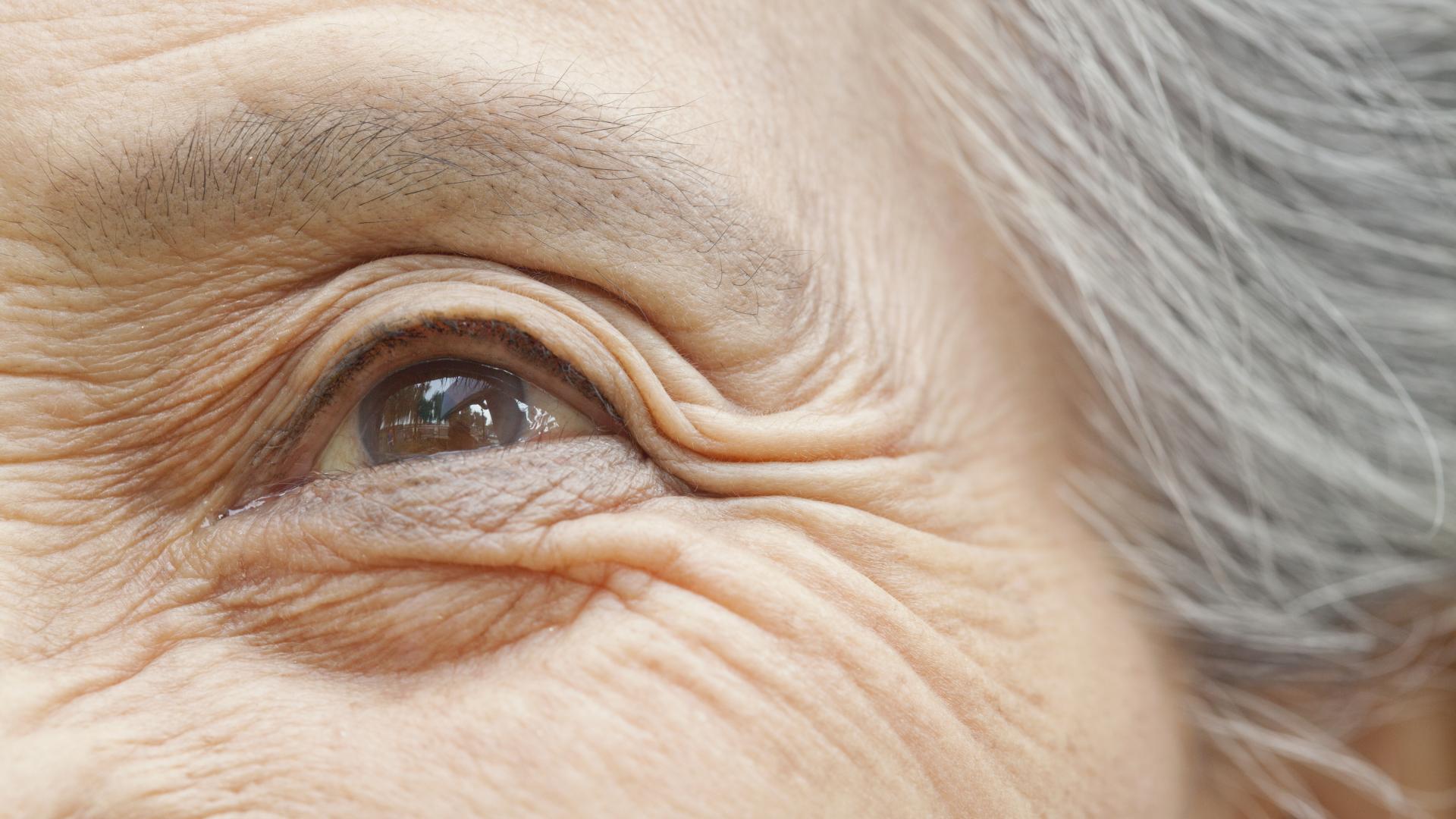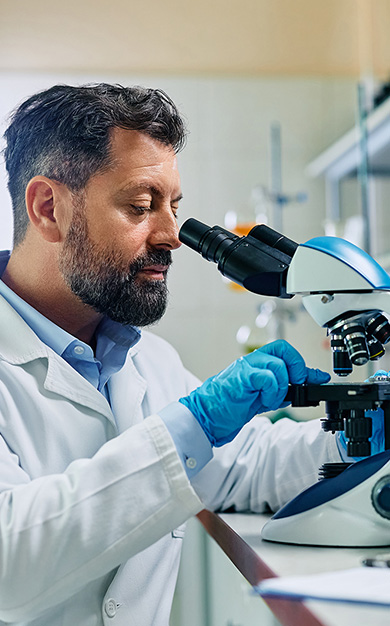Update on AMD Treatments
Featuring
Edward Marcus, MD
SightMD in New York


Edward Marcus, MD
SightMD in New York

The discussion features Edward Marcus, MD, from SightMD in Brentwood, New York. Dr. Marcus specializes in medical and surgical management of retinal diseases, including diabetic retinopathy, macular degeneration, and retinal detachment. He also specializes in treating inflammatory and infectious eye diseases.
BrightFocus Foundation
Update on New AMD Treatments
November 20, 2019
1:00 p.m. EDT
The information provided in this transcription is a public service of BrightFocus Foundation and is not intended to constitute medical advice. Please consult your physician for personalized medical, dietary, and/or exercise advice. Any medications or supplements should be taken only under medical supervision. BrightFocus Foundation does not endorse any medical products or therapies.
Please note: This Chat has been edited for clarity and brevity.
MICHAEL BUCKLEY: Hello, I’m Michael Buckley with the BrightFocus Foundation. Welcome to or welcome back to the BrightFocus Chat. Today’s topic is “Update on New AMD Treatments.” We’re having this topic today because there is a new product out on the market for people with age-related macular degeneration, so here today to discuss that and answer a wide range of questions is Dr. Edward Marcus. He is an ophthalmologist with the practice SightMD in New York. If you’re new to the BrightFocus Chats, welcome. Once a month, we have the opportunity to spend about 30 or 40 minutes with leading experts on vision disease and eye health. With that, Dr. Marcus, I’d like to start off today’s Chat. I was wondering if you could just tell us a little bit about yourself and what you do at SightMD.
DR. MARCUS: Sure, and thank you so much for having me. My name is Edward Marcus. I am a fellowship-trained vitreoretinal surgeon, or a retinal specialist, as we’re otherwise known. I am a partner in SightMD, which is a multi-subspecialty ophthalmology practice in the New York area—specifically Long Island, New York, in lower Westchester County. I treat a wide variety of both medical and surgical diseases of the retina—which is the neurosensory tissue in the back of the eye—which range from diabetes and macular degeneration (which is the subject of today’s talk) to surgical diseases like retinal detachment, macular hole, and things as simple as floaters. We cover a lot of different conditions in the office doing procedures, as well as in the operating room doing surgical intervention.
MICHAEL BUCKLEY: Thank you. Just sort of for background, how did you become involved in vision health and science? Is this something you’ve wanted to do as a kid? Or, how did you come to be?
DR. MARCUS: The long and more important answer is that when I was in medical school, I really liked both medicine and surgery. I thought that there was something attractive about diagnosis and thinking through a condition and coming up with an answer to why someone was feeling a certain way, as well as I like the action and hands-on experience of doing surgery. And there are not that many fields that involve both medicine and surgery where you’re kind of spending an equal amount of time in the operating room and diagnosing conditions, as well as reading images, which is another…or radiology, which is another kind of exciting aspect of medicine and diagnostic imaging. And ophthalmology, specifically retina, combines all three.
Every single day, we’re reading images; we’re diagnosing patients; we’re doing minor procedures, major procedures, surgical procedures. It’s kind of an all-encompassing type of field that is at the forefront of medical technology, as we’ll be discussing today. There are breakthroughs almost on a monthly basis, specifically in retina, and there are new ways to treat conditions all the time. I feel like I’m doing something that is both fulfilling in the practice of it, as well as feeling like I’m in something—in a field that is constantly evolving more than some other fields.
MICHAEL BUCKLEY: I agree, and you’re exactly right. This is a tremendously dynamic field of health care, and that’s why we wanted to have this topic today. We’re very appreciative of your time today because, as I mentioned at the top, there’s a new AMD medicine on the market. I was wondering if you could start off by telling us a little bit about what it is and how it works and just sort of a kind of an overview of this new product that will be good for our audience to know about.
DR. MARCUS: Sure. Brolucizumab—its trade name is Beovu®—is a medicine that’s been developed by Novartis and is the latest in a long line of medications that target the enzyme VEGF, or vascular endothelial growth factor. It is an antibody fragment, whereas the first couple of medications—Avastin® and Lucentis®—are monoclonal antibodies, and this is just a fragment of an antibody, so it’s a much smaller molecule. It was designed to retain its efficacy for 12 weeks, or 3 months. So, the general trend in intravitreal injections has been to develop molecules or medications that will last longer and be able to suppress the leakage of fluid for longer periods of time, because the current standard of treatment is monthly injections in each eye, which tend to be quite a burden in terms of patient adherence. Showing up and getting imaging and injections twice a month for the rest of your life is very hard for many people, especially older people with macular degeneration. So, there’s been a lot of focus in trying to get medications to last longer.
There’s one I didn’t mention, which is aflibercept, which was the last breakthrough in 2011 when it was approved by the FDA, which was kind of designed to last for 8 weeks—or 2 months—but that hasn’t really panned out exactly. It’s a very effective medication, but monthly injections still seem to be the standard, even for that quote-unquote “8‑week” dosed medication. Brolucizumab in clinical trials has been demonstrated to retain its efficacy for 12 weeks, as compared to the monthly injections of the other medications, and it has been demonstrated to be non-inferior. So, that’s kind of where brolucizumab has come from, why it was developed, and what we hope we can achieve by using it in today’s market.
MICHAEL BUCKLEY: Great. If I heard this correctly, it’s still an injection. It’s just far less frequent, more like 3 months instead of once or twice a month?
DR. MARCUS: That is the goal.
MICHAEL BUCKLEY: I was wondering, is this product…I guess we need to just go back one more. When you said it’s non-inferior, does that mean it’s considered to be comparable to the…?
DR. MARCUS: Exactly. The results were that the 3-month (every 12-weeks) dosing of brolucizumab was equivalent to the every 8 weeks dosing of aflibercept, which was the prior kind of milestone and indication. Now, the important thing to remember is that aflibercept, or Eylea®, was approved and indicated for every 8 weeks dosing, and if you’ll recall, I said that we don’t actually use it every 8 weeks; it tends to be used every month, even though it was released for every 8 weeks. So, that’s what’s yet to be determined: It could be that we do end up using the brolucizumab every 12 weeks, but it could be just that it’s a more effective way to get to every 4 weeks, to every 8 weeks than the Eylea, because there are several aspects to this. One is the ability to dry up the retina to make the fluid go away, and the other is how long it lasts. And what we found with the Eylea is that the Eylea dried the retina better than everything else.
So, people looked very good, better than anything else, after a couple of weeks, but we still needed to use it every 4 weeks to start. We weren’t really going to 8-week dosing, and we really don’t for quite a while for most people with the Eylea. And we may find the same thing for brolucizumab—that it does a great job, even a better job than Eylea off the bat—but we can’t really get into 12 weeks right off the bat. That we still have to go to monthly or every 4 or 5 weeks to start, and then eventually get to 12 weeks. It’s a little bit more complex than that.
MICHAEL BUCKLEY: Sure. I appreciate that, talking about the nuances there. How should patients approach this? Is this something they should ask their doctor about individually? How does one…what’s the best way to approach a new product on the market if you’re a patient?
DR. MARCUS: Well, of course, the key phrase there is “on the market.” What that means is that this new product has been subjected to years and years of research, testing, and FDA approval. That means that it’s definitely been around for a while. This is not like a new car that could have various parts of its drivetrain or electronics that just aren’t working; it’s something that’s been proven to work for years before it’s released to the market. So, knowing that it’s available means that you know that it’s okay—or at least you’re pretty sure, but you have to at least be somewhat confident that the FDA has proven that it’s safe and effective before it’s released to the general public. And ask—you know, how they say in those commercials on TV—ask your doctor. I think that a doctor or a physician practice that has access to the latest medications or is willing to use the latest therapies shows a desire to try to offer the patients the best that’s available. Obviously, at the end of the day, it should be up to the individual physician exactly which medication is most appropriate for that patient, because it may not be the best medication for that particular patient’s condition as they present, or if they have various intersecting conditions, like diabetes and macular degeneration.
There may be a role for other medications or even the steroid-style medications that may be more useful. I think bringing it up is always a good idea, and that will prompt the physician to kind of explain why they would or wouldn’t use that medication and helps the patient understand their condition better.
MICHAEL BUCKLEY: That’s great. I appreciate that. A new product, such as Beovu…is this covered by Medicare and private insurance in a way that’s similar to other treatments? I know it’s early, but what do you know about this so far?
DR. MARCUS: Beovu is definitely covered by Medicare. It is not so widely covered by private insurance, as well as Medicare—what do you call them?—the Medicare supplements. We always do a benefits investigation when we start a medication such as this (which is expensive) to be sure that the patient is fully covered. What I mean by that is if the patient is somehow not fully covered by the supplemental insurance or whatever Medicare plan they may have, the company—Novartis—participates in copayment assistance programs, which would cover the remainder. So, once the benefits investigation has been completed, we will have identified how the majority, if not 100 percent, of the bill will be covered for the patient by someone somewhere.
MICHAEL BUCKLEY: That’s good to know. There are a few questions coming in right now. They’re wondering, is AMD genetic? Should somebody worry about their kids and grandkids getting AMD?
DR. MARCUS: Sure. AMD is very much genetic. There are many different genes and locations on specific genes that have been associated with the development of AMD. So, anybody with first-degree relatives who have AMD, I always encourage them to start being looked at once they’ve passed the age of 50. That means an OCT scan at a retina specialist’s office, at the very least, to detect the earliest changes, which would be little lumps underneath the retina called drusen.
It’s also important to note that 90 percent of people with AMD, or age-related macular degeneration, will go on to have normal vision and never have any issues. It’s only 10 percent of people who end up with either wet macular degeneration or geographic atrophy—things that could cause you to lose vision. This is not some sort of horrific prognosis. Ninety percent of people will have nothing to worry about their entire lives. It’s just good to know, because you need to be monitored once you have it to detect early changes that can be treated. It is very, very much genetic. There are several genes in the complement chain and something called HTRA. There are a lot of genes that are being looked at, and there are a lot of genes that are associated with the development of macular degeneration.
MICHAEL BUCKLEY: That’s good to know, and it definitely seems like if this is in your family, it’s good to be informed. We hear a lot of people talk today about genetic testing. Is there any value in that for AMD?
DR. MARCUS: I guess there is value in information, but even if you have various gene loci or specific gene positivity, that doesn’t mean you’re necessarily going to develop AMD, so it’s imperfect information. I think the easiest (and obviously less expensive) thing to do is to just have an OCT scan to look for the early changes, because if you have genes that are positive but you don’t have any actual physical findings, then there is really no point to undertake any sort of preemptive screening programs or to start taking the vitamins or things like that, because you may have the genes but may not have the condition. So it’s not one necessarily leading to the other.
MICHAEL BUCKLEY: Thank you. We had a question. Somebody’s wondering if their doctor says the words “geographic atrophy,” is that the same or different from the AMD we’ve been discussing today?
DR. MARCUS: That is dry macular degeneration that has hung around long enough to cause the cells of the retina overlying those drusen, or lumps, to start dying away and fading away. It is different from what we’ve been talking about. We’ve been talking about wet or exudative macular degeneration. Dry is another form of macular degeneration that is advanced, so another part of that 10 percent that is not treated with injections—or at least not so far—and it is just kind of the very, very slow march of fading away of the retinal cells above the kind of inactive lumps of drusen.
MICHAEL BUCKLEY: Let’s go back to a minute ago in response to the genetic testing question. You mentioned an OCT. Is that something that an ophthalmologist would have in their office, or does somebody have to go to a different type of facility?
DR. MARCUS: Ophthalmologists almost universally have an OCT in their office; all retina specialists do, because it is our main modality of imaging and screening. Some optometrists even have OCTs, but I would not rely on somebody who’s not trained to look at it regularly to find things that are subtle. I think the best bet is a retina specialist, if not a general ophthalmologist, who sees a lot of folks with AMD.
MICHAEL BUCKLEY: Great. And one very basic question we get here a lot is, can someone prevent AMD from occurring in the first place?
DR. MARCUS: From occurring? No. I mean, there is, I guess, a genetic predisposition. There are things you can do to kind of keep it at the very early stages, like avoiding sunlight; using sunglasses; having a diet rich in antioxidants, fruits, and vegetables; and avoiding smoking. Smoking is a very, very strong risk factor for developing macular degeneration. But some people may be so genetically predisposed to it that they’re going to get it anyway. It’s kind of like cancer, in a way.
Not in its seriousness—it’s obviously not a life-threatening condition—but people just have a certain genetic predisposition, and there are lifestyle factors that will either push you over the edge or will not, depending on how much of a risk you have based on your genetic code.
MICHAEL BUCKLEY: Thank you. And if somebody has already experienced vision loss from AMD, can that be reversed at all?
DR. MARCUS: Usually, yes. It depends on, obviously, what the vision loss is from. If there is a lot of fluid and exudation underneath the retina from wet macular degeneration, then injections can make that vision improve rapidly. If the vision loss is from that second entity we talked about—geographic atrophy, which is kind of the slow death of retinal cells—then it’s not reversible, because those cells can’t come back; you can sort of only arrest it in its path.
MICHAEL BUCKLEY: Thank you. One question that several of our listeners have asked today is, can AMD spread from one eye to the other?
DR. MARCUS: No. No, it cannot. It is not…it doesn’t spread at all. It’s just that one eye has the same risk as the other eye, so it is very, very unusual to see macular degeneration only in one eye. You’ll kind of see the same condition developing almost simultaneously. Will it be in the same stage? Not always. It may be that one eye progresses more rapidly than the other, but it’s not spreading; it’s just that it’s kind of coming from the same risk pool.
MICHAEL BUCKLEY: That’s good to know. We have a couple of questions that relate to AMD in other conditions of the eye, such as glaucoma or cataracts. In terms of cataracts or glaucoma, does either of those cause AMD, or does AMD cause glaucoma or cataracts? Are there connections between those three conditions?
DR. MARCUS: No. There is no causal relationship, and the genes are not the same, but you see a lot of the same people developing them because they have a lot of the same risk factors. For instance, age is a risk factor for all three—for glaucoma, cataract, and macular degeneration—but one does not cause the other. Older folks who have had a lot of sun exposure may be equally prone to developing macular degeneration and cataracts, but again, one does not have anything to do with the other; they just kind of happen alongside each other very commonly.
MICHAEL BUCKLEY: Good to know. I know you mentioned you’re up in New York, and BrightFocus is in Maryland. This time of year, the northern half of the U.S. gets dark. It gets dark early, it’s cold, and it kind of leads to a lot of isolation—maybe people not getting out as much. Do you have any tips that you share with the patients you see about how to handle that world getting a little smaller at this time of year?
DR. MARCUS: Sure. I mean, the key obviously is increasing light, so being in well-lit areas or having good, strong LED-type lights at home that brightly illuminate whatever you may be doing, whether it’s cooking, sewing, reading, anything like that. The darkness is certainly a problem. Some people simply migrate south. Obviously, a lot of snowbirds come from New York and Maryland and head down where it’s a little bit brighter and a little sunnier. There are certain types of glasses that help you see a little bit better in the dark (which low-vision specialists and optometrists may be able to recommend) that reduce glare or may brighten some objects—I think having, if possible, a newer automobile with LED-style headlights that illuminate very powerfully or best approximate the light of the sun. So, there are definitely things you can do. I guess you can boil them down into seeking sunlight: number one, doing most of your activities during the day; number two, using bright and powerful lighting technology; and number three, using the appropriate glasses to bring things into focus.
MICHAEL BUCKLEY: That’s good to know. Staying on that point for a minute, it seems like when somebody is out, you can get a real bright glare from the snow, or it seems like the sun can get at a really low and kind of tough angle in the sky. Any tips for how someone could best manage that?
DR. MARCUS: Sure. Polarized sunglasses are always good. I think a lot of the sunglass brands will offer polarized lenses, especially in prescriptions; I think that cuts down a lot of the glare. Just kind of knowing how to avoid those conditions—like driving on the highway heading east at 7 a.m. is always a tough one, because you’re seeing that sun peak over the horizon, those types of things—just kind of knowing when you’re going to be in that situation and using the polarized lenses when you can.
MICHAEL BUCKLEY: And a final question about driving. I can imagine this to be a very difficult topic among families: when somebody should restrict or stop driving. In your practice, do you have these conversations with families, or are there any tips for how to navigate what I would imagine would be a very challenging topic for families to discuss?
DR. MARCUS: Sure. The easiest thing is to go by the law. Every state has its own laws about driving. In New York State, you have to be 20/50 or better in one eye and have a certain visual field to have an unrestricted driver’s license, or 20/70 or better to have a restricted driver’s license. What I do is advise patients that, based on their exam and based on our findings, that it’s either legal or illegal for them to drive. We obviously don’t call the police. It’s not our job to enforce the law, but we would advise patients that if their vision is not good enough to drive, then they could be subject to prosecution and even severe penalties like incarceration if they get into some sort of accident or endanger someone’s life because they’re driving inappropriately.
MICHAEL BUCKLEY: How should someone raise concerns to a family member or close friends about their driving, about age, and vision-related driving concerns?
DR. MARCUS: I think the easiest thing is to stick to the facts, because then you’re not imposing your opinion or your beliefs on somebody. If the law in your state clearly says that the individual in question is not allowed to drive, then you can simply tell the family member that they risk being in jail, and that’s the truth. No one wants to go to jail. They’re endangering other people’s lives, not their own. Someone who’s driving illegally is not putting just themselves at risk but anyone else who’s on the road or on the street. You don’t want to use guilt so powerfully, but they risk so many things that it’s just not worth it if they’re not allowed to drive.
MICHAEL BUCKLEY: That’s very understandable. Kind of continuing from the driving question, it would seem like there’s a lot of caregiving challenges with AMD, particularly for patients who need to get regular injections. We all want to follow the doctor’s advice, but it’s often challenging, particularly if it involves getting rides. How could someone best follow a doctor’s treatment plan for AMD?
DR. MARCUS: The best thing to keep in mind or the best motivating factor is that the best results come from sticking to the plan. We try to offer as much flexibility in scheduling as we possibly can. I mean, someone like myself, I go to seven or eight different offices, so chances are I’m in your neighborhood at some point. We’ve got to just get you in there, because the easiest way, as in your last question, to encourage people to participate positively in the treatment plan is to give them the alternative. If somebody knows that “If I don’t do this, I’m just going to go blind,” that’s an unimaginable thing. I mean, vision is the most cherished sense of human beings, or it seems that that’s what the research shows.
So, your most important way to interact with the world is at significant risk, so if you don’t do what the plan says…and I’m not trying to be paternalistic, but we have to do this treatment plan or you will go blind, and that’s it. There’s no question, and it’s irreversible most of the time if you don’t get your treatment in time. You will accumulate a lot of fluid and damage and scar tissue, and you will not regain your vision. We don’t like to use fear in medicine, but sometimes that is the emotion that you have to play on.
MICHAEL BUCKLEY: Yeah, as you say, it is the truth. What are your observations about patients and caregivers on vision disease? What do you see as some of the challenges in either somebody accepting help or a family member or friend wanting to provide help? When you look and see those dynamics play out, any suggestions for either patients or families to make the caregiving partnership go as well as it can?
DR. MARCUS: I guess you want your family member to be kind of…to be the family member that you know. I guess once the person understands that grandma or grandpa may actually not be able to come to events anymore or may not be able to babysit the kids or do things like that if they can’t see, then the person becomes more invested in getting them to their appointments. I guess it’s kind of the same argument as before, that the alternative is much worse, that if you don’t help them out, then not only they but you will be faced with kind of a situation that is maybe not acceptable. So, we’ve just got to make time, and if you get them to enough treatments, then maybe they can start driving themselves and you don’t have to do this anymore. That’s the sort of thing that we talk about.
MICHAEL BUCKLEY: Yeah, very understandable. A last question on that thread. In your experience, what makes a visit to an ophthalmologist go as well as possible? Any tips for patients or caregivers on how to make that go as well as it can?
DR. MARCUS: Sure. As in any situation, having an open mind and listening to what the doctor has to say about your condition and kind of being ready to accept things that may seem unusual or crazy. A lot of people don’t like to think about getting needles in their eyes, but that’s just how things are. Just understand that the doctor should—or invariably does—have your best interest in mind and that we’re not recommending things for any other reason. We’re looking to make your life better, and sometimes that may be hard to accept, but once you’ve kind of gone through it, the visit is easier if you’re just understanding that every step has a purpose and everything we’re doing is to improve your condition.
MICHAEL BUCKLEY: I agree. We have probably time for only one or two more questions. We have a caller that’s wondering, what are the best vitamins someone should take if they have AMD?
DR. MARCUS: The AREDS 2 PreserVision by Bausch + Lomb are the only vitamins that contain the exact formula that was researched and proven to work, so that is the only combination that we actually know is effective. The other ones out there kind of mimic it or change it a little bit, but that’s the one that I would go with.
MICHAEL BUCKLEY: Great. Before we conclude with our discussion, we covered this earlier, but for our listeners, should they go to a website to learn more about Beovu, or is it something they should ask their doctor? How should one pursue learning more about this?
DR. MARCUS: Either way. There’s Beovu.com, which is easy, and that contains all the relevant links and things. If you put “Beovu” into Google, you’ll come up with the various research studies—Google is pretty well curated on that. And, obviously, asking your eye care provider about it who will direct you to somebody who will give you kind of a professional non-invested answer.
In other words, someone who is not financially going to benefit from Beovu and is knowledgeable about it, kind of like we’re doing here. That’s the best way to learn about it.
MICHAEL BUCKLEY: Great. Dr. Marcus, as we conclude today, I was wondering do you have sort of final thoughts about the topic today? Is there a sort of recurring piece of advice that you’d like to share with your patients or any sort of big-picture observation you’d like to leave with us today?
DR. MARCUS: I think that the theme I would go with is, “Trust the system.” There is a pretty good network of physicians and medications and treatments that are available and covered under your insurance plan, and the protocols that are laid out there have been researched for decades. Trust in that work that’s been done, because that is the ideal way to achieve the best vision possible. We’ve answered all the questions hundreds of thousands of times, and we’ve come up with the best possible way to approach this. So, let your doctor guide you. If you want, get a second opinion or a third or a fourth opinion, but ultimately trust the system, because we’ve proven many different times over how best to manage these conditions, and there are hundreds of doctors out there who are very eager to help you live your best life possible with the clearest and optimal vision.
MICHAEL BUCKLEY: Well, that’s great. It’s great advice, particularly in the face of conditions such as AMD that I’m sure can be very stressful for people. Dr. Marcus, we really appreciate you being so generous with your time. I think you gave our audience a lot of good information about new and other treatments for AMD and a lot of questions about how to better understand and manage their vision health. So, I just want to thank you for being so generous.
DR. MARCUS: It was great to be here.
MICHAEL BUCKLEY: We will be back in late January for the 2020 series of BrightFocus Chats. And on that note, I just want to thank our audience and thank Dr. Marcus for being a part of us today. Thank you very much.
DR. MARCUS: Thanks again.
BrightFocus Foundation is a premier global nonprofit funder of research to defeat Alzheimer’s, macular degeneration, and glaucoma. Since its inception more than 50 years ago, BrightFocus and its flagship research programs—Alzheimer’s Disease Research, Macular Degeneration Research, and National Glaucoma Research—has awarded more than $300 million in research grants to scientists around the world, catalyzing thousands of scientific breakthroughs, life-enhancing treatments, and diagnostic tools. We also share the latest research findings, expert information, and resources to empower the millions impacted by these devastating diseases. Learn more at brightfocus.org.
Disclaimer: The information provided here is a public service of BrightFocus Foundation and is not intended to constitute medical advice. Please consult your physician for personalized medical, dietary, and/or exercise advice. Any medications or supplements should only be taken under medical supervision. BrightFocus Foundation does not endorse any medical products or therapies.

Gene therapy treatments may one day free people with age-related macular degeneration (AMD) from the need for frequent eye injections.

In recognition of National Caregivers Month, this episode explores the vital role of those who support individuals living with vision loss—whether family members, professionals, or volunteers.

Dr. Jeffrey Stern and Dr. Sally Temple, Principal Investigators and Co-Founders of the Neural Stem Cell Institute, will explain what stem cells are and share the latest updates from clinical trials.

Artificial vision systems utilizing these technologies show promise for individuals with profound vision loss in early trials.

Join Dr. Sara Fard, a retina specialist at Illinois Retina Associates, as she explains the benefits of sustained GA treatment, including slowing the rate of vision loss, protecting retinal tissue, and supporting daily visual function.
Help Fight Macular Degeneration and Save Sight
Your donation helps fund critical research to bring us closer to a cure for this sight-stealing disease and provide vital information to the public.
Donate Today